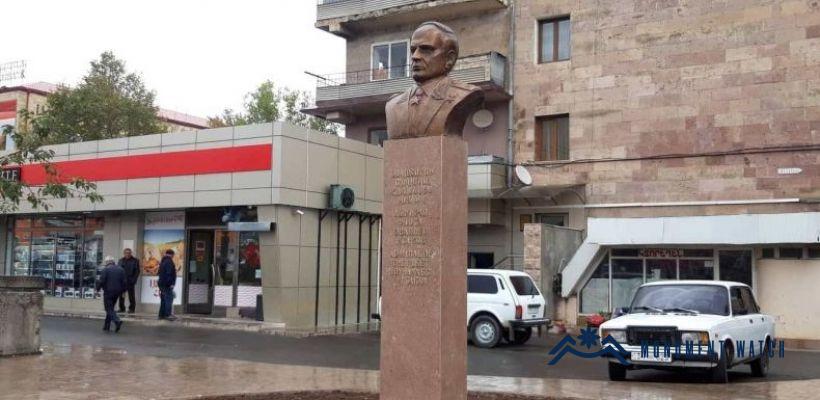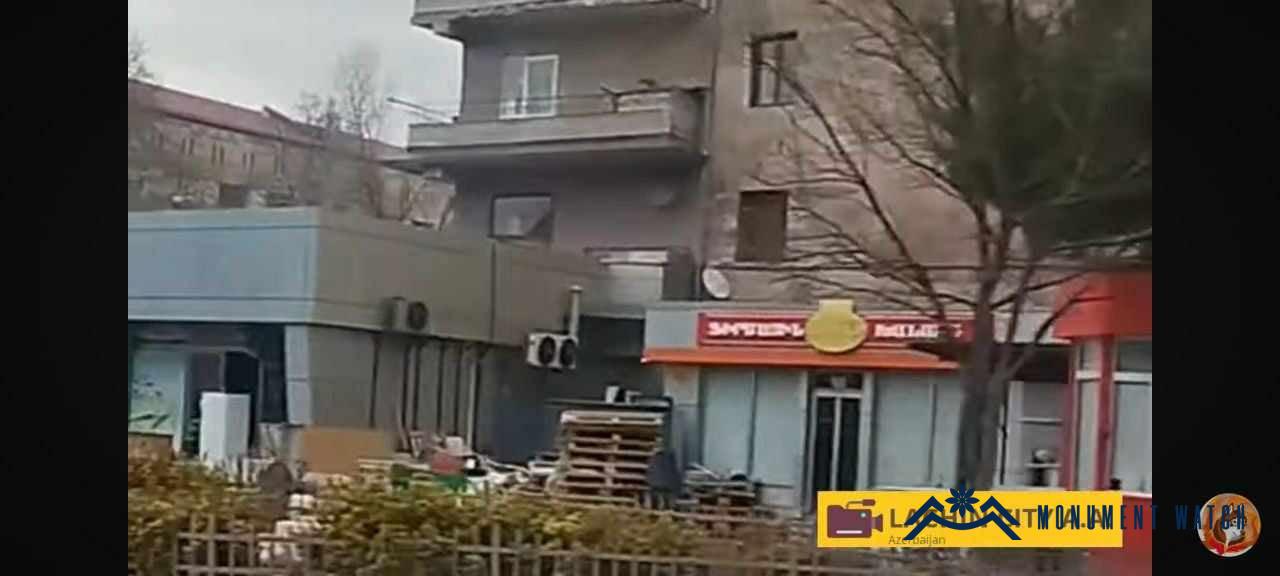Azerbaijan Destroys Bust of Ivan Isakov
On February 16, 2024, it was reported that the Azerbaijani authorities had removed the bust of Admiral Ivan Isakov from the occupied city of Stepanakert. The bust, sculpted by Albert Harutyunyan and installed in 2018, commemorated Admiral Isakov, an Armenian naval officer who served in the Soviet Navy and was honored as a Hero of the Soviet Union for his contributions to military theory and strategy.
The observations of the past two months suggest that the Azerbaijani authorities have begun a systematic removal and destruction of statues and busts built in the city during the Soviet era and in the last three decades in the occupied Stepanakert. This action appears to be a deliberate effort to erase Armenian cultural symbols and heritage from the city. What is particularly noteworthy is that this process began with the open dismantling of the statue of Stepan Shahumyan. This de-armenization and transformation of the city seem to have been initiated by Ilham Aliyev, who discussed the city's history during a speech in occupied Stepanakert. See more details here.
After the 44-day war of 2020, in several occupied settlements of Artsakh, the Azerbaijani forces desecrated and destroyed numerous memorials, or their elements dedicated to the memory of the victims of the Patriotic War. A notable example of this occurred in the village of Mets Tagher in Hadrut, which was the hometown of Armenak Khanperyants, a Hero of the Soviet Union and Air Marshal. Additionally, the monument in Azokh village of Hadrut, dedicated to the memory of the war's victims, was openly desecrated.
Our response
Azerbaijan has violated the provisions of The Hague, Geneva, and international humanitarian law regarding the protection of cultural values in the occupied territories.
Under international humanitarian law, cultural heritage is regarded as an exclusive expression of human creative thought. The destruction or damage of such heritage directly infringes upon the cultural rights of individuals or communities, whether during or after a conflict.
Article 8 of the International Criminal Court considers the destruction of cultural heritage in occupied territories an international war crime. "It is forbidden to intentionally direct attacks on structures dedicated to religion, education, art, science, or charity, historical monuments, hospitals, unless they are military targets."
The various relations and processes that take place during the occupation are regulated by International Humanitarian Law. The 38th, 39th, 40th, and 41st rules of international humanitarian law refer to the protection of cultural values.
It is extremely important to emphasize the fact that the International Court of Justice has confirmed that the laws in force in the occupied territories, including provisions for the protection of cultural values, have acquired the status of international customary law (infra Jurisprudence), that is, they act as a universal and inescapable rule and are binding on all states.
The Declaration on the Deliberate Destruction of Cultural Heritage, adopted by the General Conference of UNESCO during its 33rd session in Paris in 2003, provides principles for safeguarding cultural heritage in occupied territories during and after armed conflicts. Article 9 of the 1999 Second Protocol to the 1954 Hague Convention for the Protection of Cultural Property in the Event of Armed Conflict also prohibits acts of destruction of cultural property in enemy-held territories.

